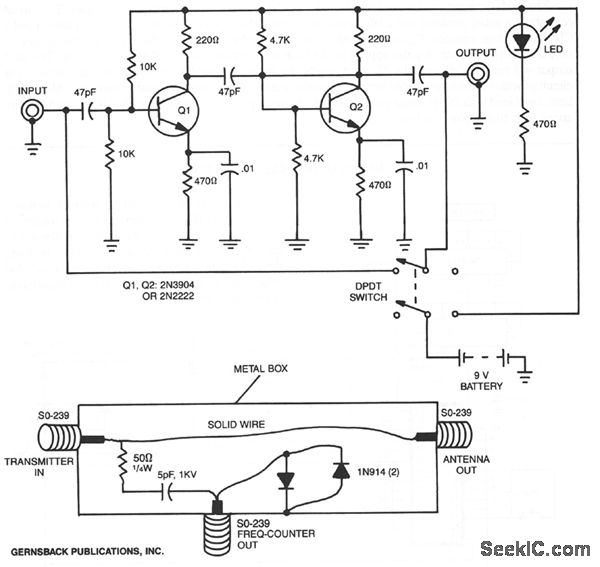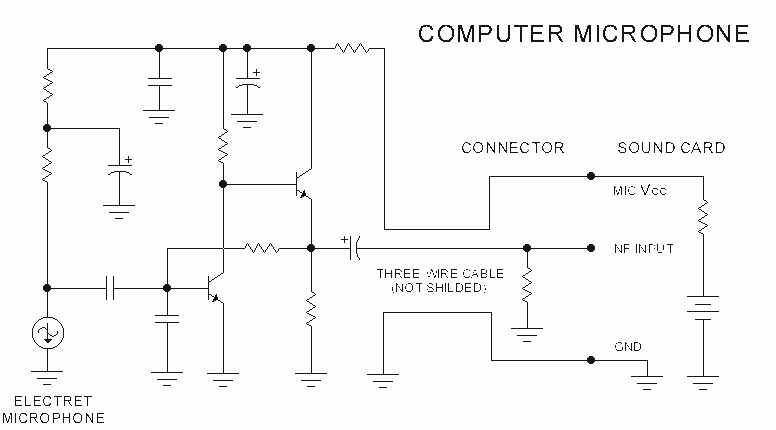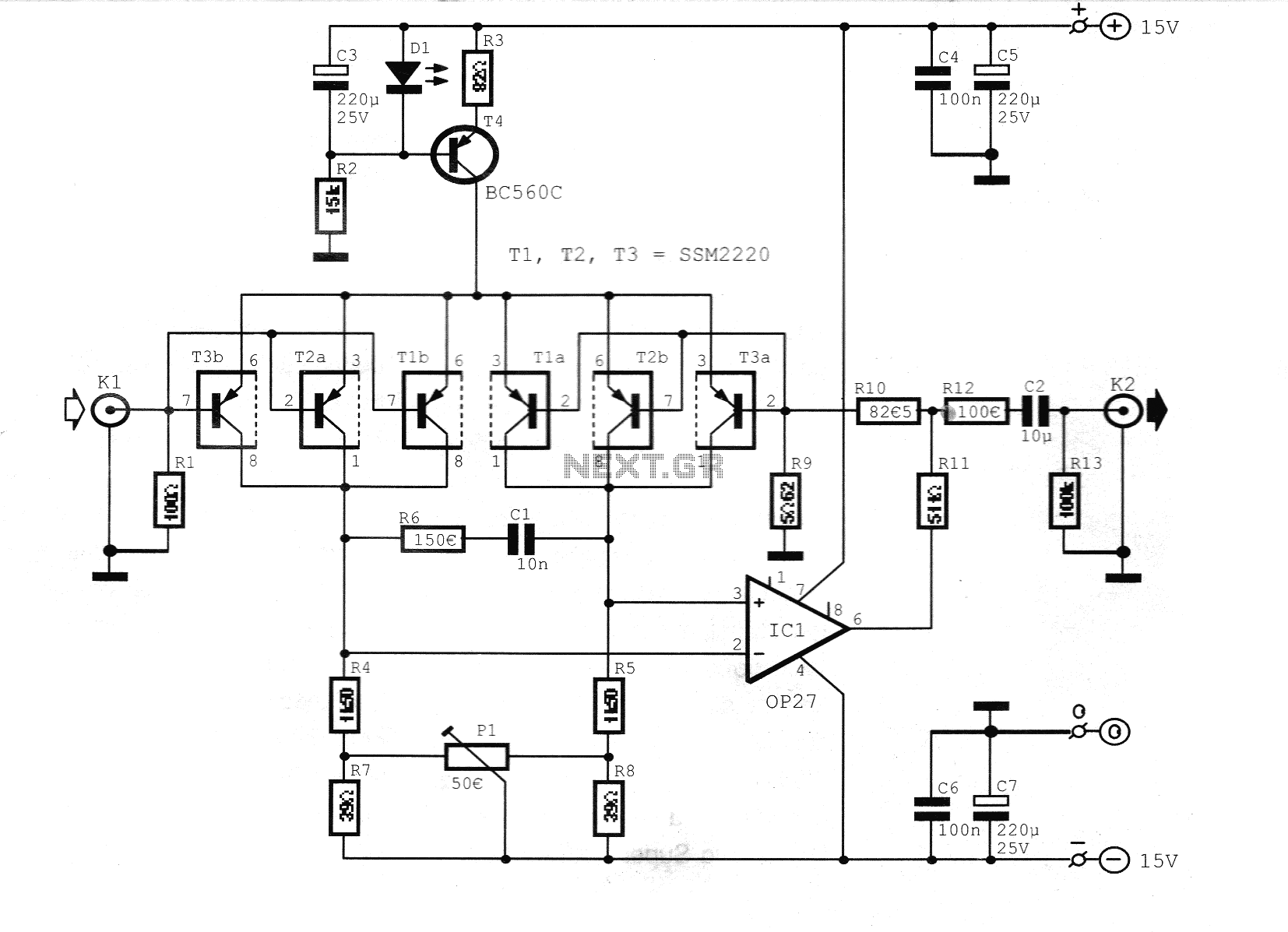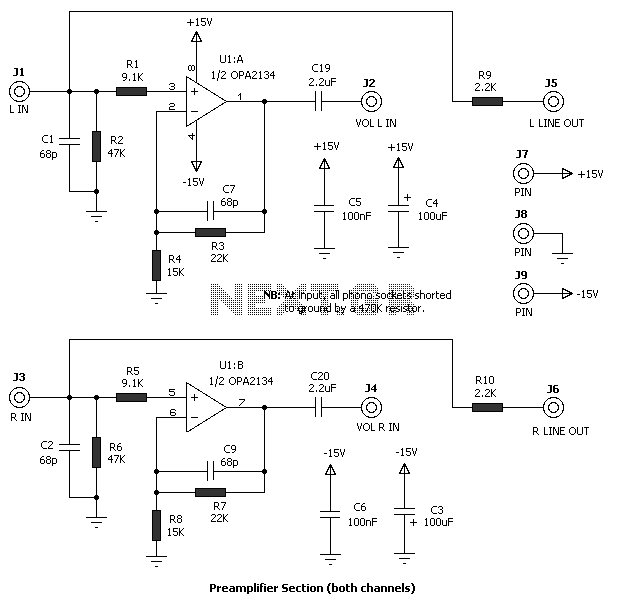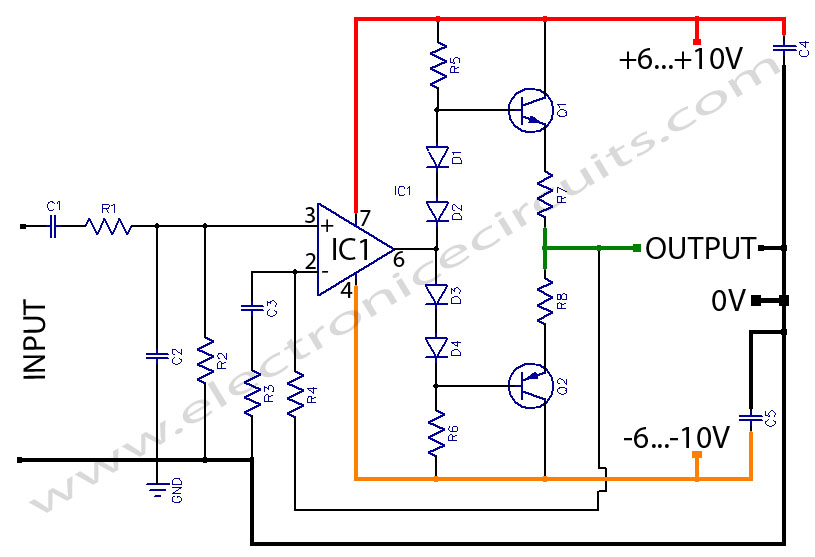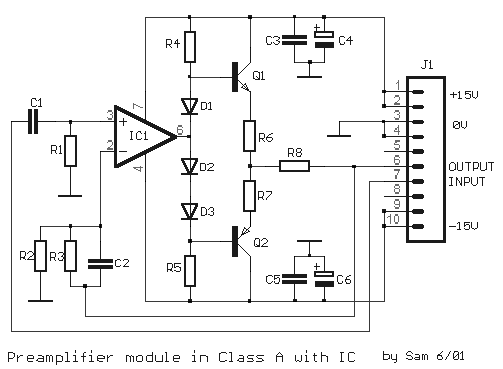
preamp
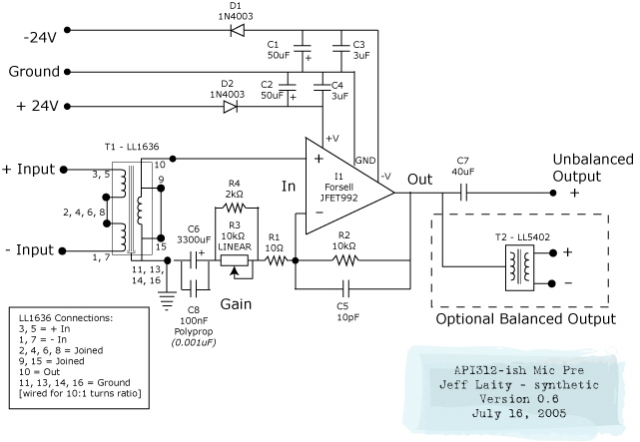
This is the final microphone preamplifier schematic. The input phase switch and phantom power circuit are not included, but they are based on the Jensen microphone input design AS016.
The microphone preamplifier schematic serves as a crucial component in audio signal processing, amplifying low-level signals from microphones to a usable level. The design typically includes an input stage, gain control, and output stage. The input phase switch allows for the inversion of the signal phase, which can be useful for correcting phase issues in multi-microphone setups.
The phantom power circuit, while not depicted in the schematic, is essential for powering condenser microphones that require external voltage. This circuit typically provides +48V DC through balanced XLR connectors, ensuring compatibility with a wide range of professional microphones.
Incorporating the Jensen AS016 design principles, this schematic emphasizes low noise and high fidelity. The use of high-quality components is recommended to maintain signal integrity. The gain stage may utilize operational amplifiers configured for optimal performance, ensuring minimal distortion and a broad frequency response.
Overall, this microphone preamp design is intended for professional audio applications, providing a solid foundation for high-quality recordings. Proper implementation of the input phase switch and phantom power circuit will enhance its functionality, making it suitable for various recording environments.Here`s my final mic pre schematic. The input phase switch and phantom power circuit is not shown, but is based on Jensen mic input design AS016. Click here for the discussion thread on this project. 🔗 External reference
The microphone preamplifier schematic serves as a crucial component in audio signal processing, amplifying low-level signals from microphones to a usable level. The design typically includes an input stage, gain control, and output stage. The input phase switch allows for the inversion of the signal phase, which can be useful for correcting phase issues in multi-microphone setups.
The phantom power circuit, while not depicted in the schematic, is essential for powering condenser microphones that require external voltage. This circuit typically provides +48V DC through balanced XLR connectors, ensuring compatibility with a wide range of professional microphones.
Incorporating the Jensen AS016 design principles, this schematic emphasizes low noise and high fidelity. The use of high-quality components is recommended to maintain signal integrity. The gain stage may utilize operational amplifiers configured for optimal performance, ensuring minimal distortion and a broad frequency response.
Overall, this microphone preamp design is intended for professional audio applications, providing a solid foundation for high-quality recordings. Proper implementation of the input phase switch and phantom power circuit will enhance its functionality, making it suitable for various recording environments.Here`s my final mic pre schematic. The input phase switch and phantom power circuit is not shown, but is based on Jensen mic input design AS016. Click here for the discussion thread on this project. 🔗 External reference
